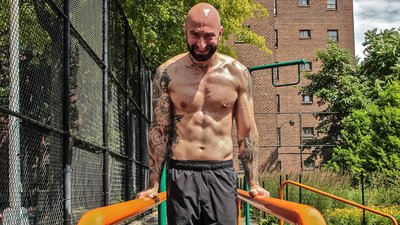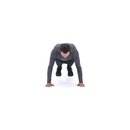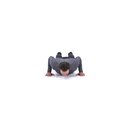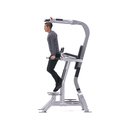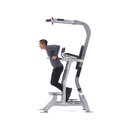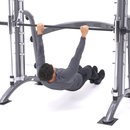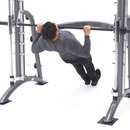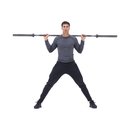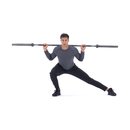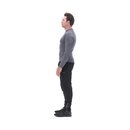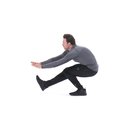As a longtime proponent of bodyweight strength training, the most common question I get asked is if it's really possible to build muscle and strength without a gym. My answer is always a resounding "Yes!" Unfortunately, even this response is often met with skepticism. To many people, getting in shape without joining a gym or even lifting weights sounds too simple to work. Fitness doesn't have to be complicated. All you need to get in great shape is the will to train hard and the discipline to do it consistently.
While bodyweight training can make you strong and muscular, it isn't as glamorous as it might look on YouTube. You have to do lots of the basics before you start trying anything fancy. Cut yourself a big slice of humble pie and be ready to push and pull yourself.
Pull-up progression
Three for All
The three most essential movements for building strength and muscle with bodyweight training are push-ups, pull-ups, and squats. I told you we weren't going to get fancy here.
These three basic moves and their progressive variations are enough to keep anyone growing for many years. The trick is to make sure you continually challenge yourself to increase your reps so you can progress to harder exercise variations once you can handle them.
Eventually you can build up to single-limb variants of these classic calisthenics. Does that still sound too easy? See if you can do a clean one-arm push-up, one-legged squat, or one-arm pull-up and get back to me.
Regardless of what training modality you use, the way to grow stronger is to begin learning a movement pattern with a relatively low amount of resistance. Gradually add more as the body adapts. All types of strength training operate under this principle of progressive overload.
In weight training, exercises can be learned with an empty bar to get a feel for proper technique before progressing to heavier poundage. This allows the lifter to learn the form without having to overcome much resistance. Due to the nature of bodyweight training, however, progress must be approached differently.
Leverage Overload
Since there is no way to do a one-arm push-up, pistol squat, or one-arm pull-up without a significant amount of resistance, you must build up to advanced moves. Do this by practicing variations in which the body is positioned in such a way as to create less resistance. As you grow stronger, you can gradually introduce harder variations. A key principle of this type of progressive calisthenics training is manipulating leverage to vary the intensity of the exercises.
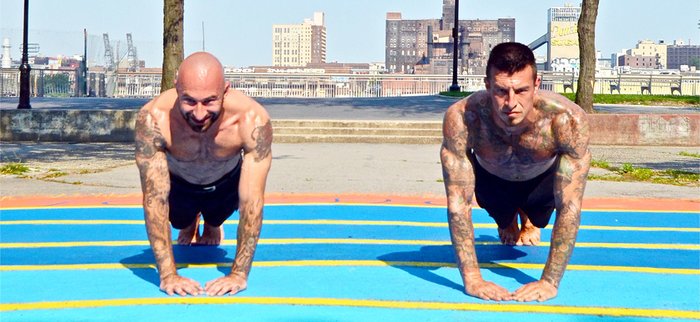
For example, if you can't do full push-ups, then start with incline push-ups. Conversely, if you can do 30-40 consecutive push-ups, you're ready to try moving to a harder variant, like close push-ups. When you get your numbers up on those, you might try archer push-ups, then self-assisted one-arm push-ups before working your way to full one-armers.
This process can take a while, but with dedication, a beginner can go from incline push-ups all the way to one-arm push-ups over the course of several months or years. These same types of progressions can easily be applied to squats and pull-ups as well.
Progressive Calisthenics (Squats)
Sets and Reps
If your primary goal from training is to build mass, I recommend using a standard bodybuilding template structured around basic calisthenics like the ones listed above. Find variations that will cause you to fatigue at around 10-15 reps and perform 3 or 4 sets of each exercise. Perform two pushing movements, two pulling movements, and two squatting movements in each full-body workout. If you stick to your program, get enough sleep and eat enough, you will undoubtedly see an improvement in both your strength and mass.
Here's a sample full-body program that could work for an intermediate-level trainee:
It may take some time to increase your reps on these basic calisthenics. With consistent practice, you can work toward adding more reps and eventually start moving to more difficult variations like muscle-ups and full pistol squats. Be patient and stay the course; whether you lift weights or use your own body for resistance, you can't get strong and build muscle without hard work and dedication. Enjoy the process and make every rep count.

